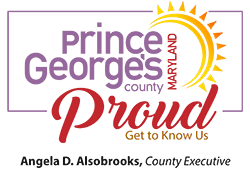
Abuse Indicators
Physical Abuse Indicators
-
Bruises:
- On any infant
- Facial bruises
- In unusual patterns
- Clustered in one area of the body
- Various stages of healing
- Both eyes “blackened” with no injury to the nose
- Burns:
- Caused by immersion in hot liquid
- Cigarette burns usually on palms of hands (leaving “crater” shaped burns)
- Caused by a hot implement, such as an electric curling iron (leaving burn marks in the shape of the implement)
-
Caused by ropes that indicate confinement
-
Welts, cuts, abrasions, fractures, and internal injuries may also indicate abuse. Since these injuries may occur through normal childhood experiences, they should only cause concern when coupled with some other physical or behavioral indicator. You should also be concerned if the injury does not seem likely to have resulted from normal activity, given the child’s age and physical development.
Behavioral Indicators
- Child:
- Overly compliant, shy, or aggressive behavior
- Avoids parents
- Inhibited crying
- Hyperactive
- Avoids physical contact
- Low tolerance for frustration
- Distrustful
- Parent:
- Holds unrealistic expectations for the child’s physical or emotional development
- “Immature”
- Dependent
- Aggressive
- Low sense of self-esteem
- Sees the child as “bad”, “different”, or “evil”
- Low tolerance for frustration
- Inappropriate coping skills
Mental Injury
Behavioral Indicators
- Child: any observable, substantial impairment of a child’s mental or psychological ability to function that is a direct result of an act or omission by a parent or caretaker. The child may have severe problems in areas of functioning such as family and/or social relationships, sleeping and eating, academics and overall development, and need specific psychiatric, psychological or social work intervention.
- Parent: frequently threatens to harm or kill the child, threatens to harm or kill the child’s pet, constantly denigrates the child or subjects the child to extensive emotional or physical isolation or confinement.
Sexual Abuse
Physical Indicators
- Child: difficulty in sitting or walking; repeated symptoms of medical problem with genitals or digestive system; presence of sexually transmitted diseases; pregnancy.
Behavioral Indicators
- Child: unusual sexual behavior or knowledge; nightmares; poor peer relationships; few social skills, extremely isolated; repeated “runaways”.
- Parent: extremely overprotective; overly interested in child’s social and sexual life; sees child as highly sexualized; jealous.
Neglect
Physical Indicators
- Child: extremely dirty and unkempt; clothes inadequate for the weather; serious medical problems left untreated; inadequately supervised; undernourished.
Behavioral Indicators
- Child: withdrawn; shy; passive; always tired; developmentally slow.
- Parent:
- Apathetic
- Shows little concern or awareness of the child’s needs
- Shows anger when questioned about child’s care
- Impulsive in making decisions
- Inconsistent disciplinary practice
- Overwhelming personal needs
